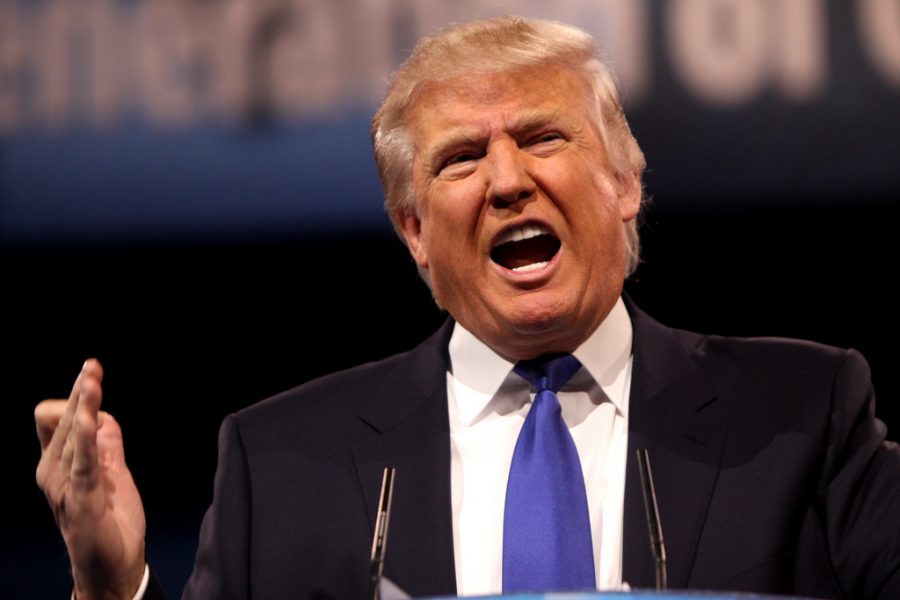Looking back on Trump’s first year of presidency
Promising the nation a fresh start, Trump made his inaugural speech nearly a year ago. Has President Trump kept his campaign promises and fulfilled the overall expectations of the country?
January 10, 2018
Following the results of a very unpredictable and enticing presidential election, reactions varied greatly. The spectrum spanned from citizens ecstatic about the new President of the United States, to citizens in utter shock and disbelief, and, of course, many people left in between. Responses varied in substantially different ways as well. While some celebrated and rejoiced, others began protesting, marching, and organizing rallies. The results showed a true divide in America. Half the population experienced a newcome feeling of empowerment, but the other half left fearful of what was to come.
Directly following President Trump’s inauguration on January 20, the 2017 Women’s March took place worldwide. More than 200,000 people attended the march on Washington. The march was an nonpartisan event in protest of President Trump due to his failure to support numerous issues such as expanding family leave, ending racial profiling, maintaining or broadening access to abortion and birth control, among other issues. Junior Emma McDonald, who participated in the 2017 Women’s March on Washington, stated, “As far as Trump’s first year has gone, I think it went better than expected. For example, some of the radical remarks he made during his campaign he did not go through with. I put a lot of faith into our legislative branch to override any irrational decisions or bills he makes.”
This time last year, the world was anxiously awaiting the new POTUS to take office. President Donald Trump, previously a real estate mogul and reality TV star, now serves as the forty-fifth President of the United States. Trump ran his campaign on numerous promises, such as building a wall, banning Muslims from entering the United States, bring manufacturing jobs back, imposing tariffs, a full repeal of Obamacare, cutting taxes, and, the most popular and vague promise of them all, to “make America great again.”
The question remaining a year after his inauguration is has President Donald Trump in fact kept the many promises made during his presidential campaign?
One of Trump’s most publicized promises is that he is going to build a wall on the southern border and force Mexico to pay for it. Trump’s intended purpose of the wall is to keep illegal immigrants from entering the US. This wall has yet to be built, but several prototypes have been created. The President of Mexico, Enrique Peña Nieto, has repeatedly refused to pay for the wall.
Another significant promise was the Muslim ban. Trump issued an executive order barring citizens of Iran, Libya, Somalia, Sudan, Syria, and Yemen from entering the US for 90 days. Many states attempted to block the order and, as a result, numerous protests arose worldwide. After repeatedly being denied and blocked, Trump revised the ban and unveiled it two more times, but the results were no different from the first attempt.
Trump has been vigorously trying to fully repeal Obamacare, but has yet to obtain the necessary votes. On March 6, the House released an ObamaCare repeal-and-replace bill, called the American Health Care Act. However, the bill was rejected by the Senate. In attempts to go around Congress, he issued an executive order that gives consumers more insurance alternatives.
Taking into consideration the ratio of Trump’s campaign promises met to promises not met, it can be concluded that, overall, President Donald Trump has not met the expectations of the Republican party or the country as a whole. Trump’s job approval rating has fallen to an average of 36.9% in this third quarter in office, well below any prior president’s third-quarter average. In retrospect, President Donald Trump has done a mediocre job at making essential changes in our country, but has succeeded in creating an immense amount of controversy and a substantial divide between citizens.













P M • Jan 13, 2018 at 10:03 pm
So glad to have a preside that puts America first .. It’s people.. And It’s safely first.. Economy is on the rise, stock market at an all time high, African American home ownership at an all time high, GDP 3 plus .. Unemployment down, taxes going down, bonuses., and minimum wage going up.. Great for most of America.. Elites are scared, because this President is delivering for middle Americs.. Don’t fall for the trap set by main stream media.. Its very easy to repeat talking points.. Do your research!! Maybe try to explore both sides.. You will learn a lot.. Don’t rely on one source.. listen to several media outlets.. liberal and conservative.. This president is by no means perfect.. but has done more than any president (Dem or Rep) in one year. (In a long .. long. time)..
Amyah • Jan 11, 2018 at 4:06 pm
I think this is a great article and it informed me a lot. I usually don’t have time to follow politics so reading this helped me stay updated!☺️
Bill Bob • Jan 11, 2018 at 8:05 am
Trump did not ban Muslims in general, he banned refugees from certain countries from entering the U.S.